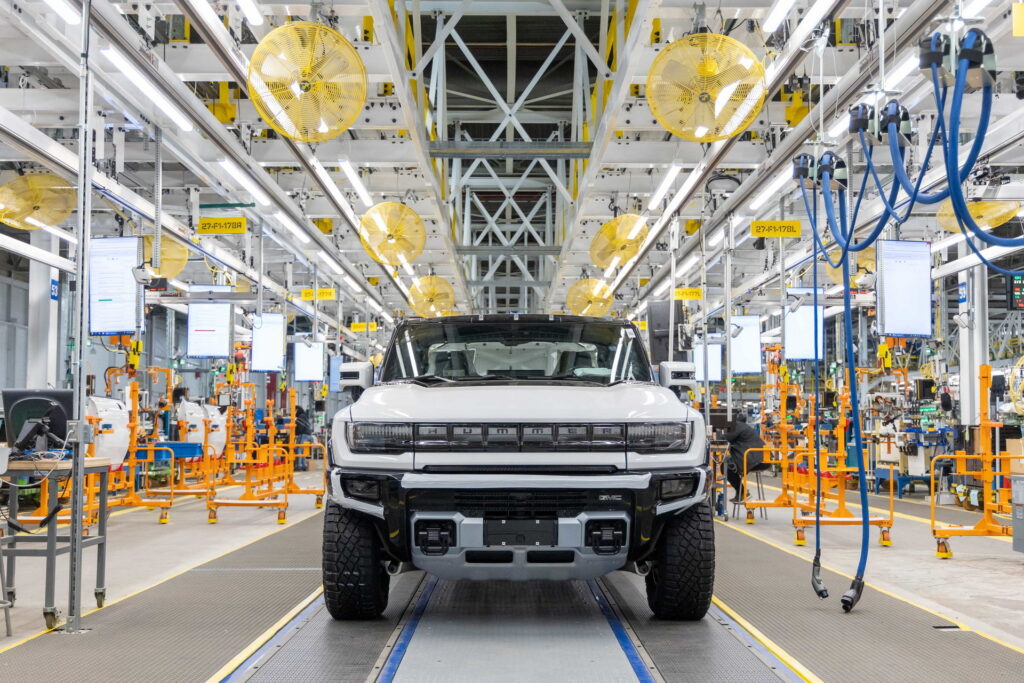
Children are pictured at an Autism Speaks Light it Up Blue Autism Awareness Celebration at Chicago Children's Museum in April 2017. State Medicaid agencies are struggling to pay for applied behavior analysis, an intensive therapy for children with autism. (Photo by Daniel Boczarski/Getty Images for Autism Speaks)
State Medicaid agencies are struggling to pay for an intensive therapy for children with autism — and looming federal Medicaid cuts are likely to make the problem worse.
Parents of children and young adults who receive applied behavior analysis, or ABA, worry states’ cost-saving measures will make it harder for them to get vital services. About 5% of children ages 3 to 17 on public insurance have autism spectrum disorder, compared with 2% who have private insurance, according to a CDC survey.
Many families and autism therapists say ABA can help improve communication and social skills, sharpen memory and focus, and replace challenging behaviors with positive ones. ABA therapy can range from 10 to 40 hours per week in different settings, including home and school. That makes it expensive.
In 2014, the federal Centers for Medicare & Medicaid Services mandated that all state Medicaid programs cover comprehensive autism services for children. It did not explicitly require coverage of ABA, but by 2022, every state Medicaid program covered ABA.
In addition, more kids are getting diagnosed with autism as screenings increase. As a result, state spending on the service has skyrocketed. In Indiana, for example, Medicaid spending on ABA therapy grew from $21 million in 2017 to $611 million in 2023. The sharp increase has prompted Indiana, and other states, to take steps to control costs.
Meanwhile, federal auditors have begun examining states’ coverage of ABA services to ferret out fraud and abuse.
For such a costly and intensive service, the states need to explore how to best reimburse this benefit so that it's sustainable and promotes quality.
– Mariel Fernandez, vice president of government affairs at the Council of Autism Service Providers
Mariel Fernandez, vice president of government affairs at the Council of Autism Service Providers, a nonprofit trade association, acknowledged that states are facing difficult choices.
“For such a costly and intensive service, the states need to explore how to best reimburse this benefit so that it’s sustainable and promotes quality,” said Fernandez, who is also a board-certified behavioral analyst. “Is [the rate] going to bankrupt Medicaid? Is it going to ensure that people are actually receiving the service?”
The Medicaid changes included in the One Big Beautiful Bill Act that President Donald Trump signed in July will increase the pressure: The law includes more than $900 billion in federal spending cuts over the next decade. Medicaid is funded jointly by the federal government and the states.
Meanwhile, Health and Human Services Secretary Robert F. Kennedy Jr. has described autism as a rapidly growing “epidemic” in the U.S. and has made it a major focus of his tenure. Kennedy has promoted the debunked theory that there’s a link between childhood vaccines and autism.
Curbing costs
Several states this year have considered curbing ABA costs by capping therapy hours, tightening provider enrollment rules, reducing reimbursement rates or changing patient eligibility rules. A bill in New York, for example, would establish a 680-hour annual cap on ABA services.
But nowhere has the issue been more prominent than in Indiana, where Medicaid has covered ABA therapy since 2016.
Governor’s group recommends ABA usage cap, rate changes as Medicaid costs rise
Historically, Indiana Medicaid has reimbursed ABA providers for most services at a rate of 40%, regardless of what they charged.
That “created some very strange incentives for a small portion of the provider network,” said Jason McManus, president of Indiana Providers of Effective Autism Treatment (InPEAT), which represents smaller ABA providers in Indiana and larger providers that operate in Indiana and elsewhere. “You had folks who were charging exorbitant amounts for the service.”
Beginning in 2024, Indiana lowered its reimbursement rate to about $68 per hour — and received plenty of pushback.
“That did have an impact on the provider community,” McManus said. “You had a lot of folks, smaller shops, who ended up closing their doors or consolidating with other organizations. So that was disruptive.”
And that year, the HHS inspector general issued a report which found that Indiana’s Medicaid program made at least $56 million in “improper” payments to ABA therapy providers in 2019 and 2020.
The state’s rapidly rising ABA costs and the federal audit prompted Republican Gov. Mike Braun to issue an executive order earlier this year creating a working group to examine ways to cut costs without compromising quality.
The group crafted recommendations to correct the problems identified in the federal audit and put ABA coverage on a financially sustainable path. Without changes in the state’s reimbursement policies, the group concluded, Indiana’s Medicaid spending on ABA therapy would reach a projected $825 million by 2029.
This month, Braun unveiled the group’s recommendations, which include the creation of a new ABA office to increase oversight and lower reimbursement rates, which the state has not yet detailed.
ABA allows people with autism “to obtain the highest level of independence that’s possible for them,” said McManus, who served on the working group.
“But from a state perspective, I can see how, if you’re purely just looking at the cost, you would say, ‘Wow, this is a cost that has grown over time, and if absent all other contexts, this is something we need to pay attention to, because it’s unsustainable.’”
Nebraska rate cut
In Nebraska, state officials also have been looking for ways to control spiraling ABA costs: Last year, Nebraska Medicaid paid out more than $85 million for ABA therapy, a surge from $4.6 million in 2020.
In July, the state announced that it would cut its Medicaid reimbursement rates for ABA, including a 48% cut to reimbursement for direct therapy provided by a behavior technician. That brought the rate to $74.80 per hour, down from about $144 per hour. Rates for therapy by physicians or other board-certified professionals also were reduced by about 37%.
Many providers saw the cuts coming, as the state has had the highest hourly reimbursement rate in the nation.
“It would be fiscally irresponsible of the state to maintain that,” said Leila Allen, vice president of external affairs at Lighthouse Autism Center, which has ABA therapy centers in Nebraska as well as in Illinois, Indiana, Iowa, Michigan and North Carolina.
Sam Wallach, president of Attain, an ABA therapy provider that operates in Nebraska and a dozen other states and Washington, D.C., said the service is “life-changing for children and families.” He views the ABA reduction as a “correction” that will make it feasible for Nebraska Medicaid to continue to cover it.
“The previous rates were well above what most Medicaid programs pay nationally, and while that created short-term benefits, it wasn’t realistic or sustainable,” Wallach said.
But some providers are taking issue with the way Nebraska went about those cuts.
For example, the state provided only 30 days’ notice before making the change. “There were providers that within 30 days had to tell their staff, ‘We’re so sorry. We have to cut your salary by ‘x’ percent in 30 days,’” Allen said.
Nebraska also didn’t examine how much it costs to provide ABA in the state, she said. The new rate is closer to what neighboring states, such as Iowa, pay. But therapists are few and far between in sparsely populated Nebraska, and families there often have to travel long distances to reach ABA providers.
“There was no cost survey to determine what the cost should be,” said Allen. “They didn’t take into account that you do have to pay people a little bit more to be able to work as behavior analysts in Nebraska.”
Finding ABA therapists in Nebraska is particularly difficult for families with older kids. Angela Gleason, executive secretary on the board of autism advocacy organization Arc of Nebraska, has a 13-year-old son with autism. She said many companies only serve very young children, up to age 6.
“So for families like mine, it’s then hard to even find a company that will serve his age and will provide that kind of support,” she said. To be able to afford therapy, her son Teddy has Medicaid coverage as his secondary insurance. ABA therapy helps him with socializing and speaking with his speech delay.
“He needs a lot more help throughout his day than a normal 13-year-old without autism might need,” Gleason said.
North Carolina court case
In North Carolina, the cost of covering autism services, including ABA, will total an estimated $639 million in fiscal 2026, up 425% from 2022, according to the state’s Medicaid agency. About five autism providers made up roughly 41% of the state’s increase in spending in fiscal year 2023-2024, according to the state.
Effective on Oct. 1, North Carolina Medicaid cut reimbursement rates for all kinds of health care services, arguing that state legislators had not budgeted enough money to keep up with rising costs. The reductions, which ranged from 3% to 10%, included a 10% cut to the reimbursement rate for autism services, including ABA therapy.
But the families of 21 children immediately sued the state Department of Health and Human Services to halt the move, arguing that it was discriminatory because it targeted children with disabilities.
Earlier this month, the families won a preliminary injunction temporarily halting the rate cut.
But families across the state are on edge as children with autism often see multiple providers — psychologists and speech language pathologists, for example — whose rate cuts were not paused, according to Allen, of Lighthouse Autism Center.
David Laxton, director of communications for the Autism Society of North Carolina, which is also a provider, said many providers won’t be able to absorb the rate reductions and continue operating.
“At some point, the math is not going to math,” Laxton said.
“It’s very stressful for families, because right now, there’s not an end in sight,” Laxton said. “There’s agreement that this [service] is very important, but there’s not been action to bring an end to the cuts.”
Stateline reporter Nada Hassanein can be reached at nhassanein@stateline.org.
This story was originally produced by Stateline, which is part of States Newsroom, a nonprofit news network which includes Wisconsin Examiner, and is supported by grants and a coalition of donors as a 501c(3) public charity.




























